16 Types Of Ear Piercings: Chart, How To Choose, And Pain Levels
Take a deep dive into unconventional ear adornment styles to elevate your look.
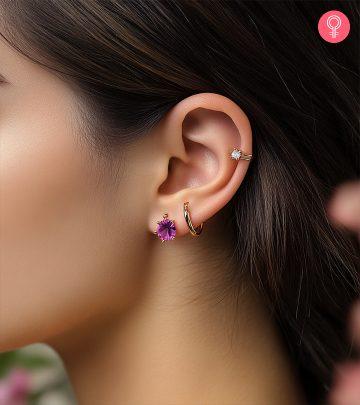
Image: Midjourney/ StyleCraze Design Team
It is common to see people sporting two to three piercings on each ear at a time. But did you know that there are at least 16 different types of ear piercings you can experiment with? That’s right! Many experienced piercing artists may argue that there are even more types based on the location and type of accessory used. However, in this article, we will explore the basic types that you can play around with to create your distinct ear accessorizing statement.
Every bit of protruding flesh and cartilage that makes up your ears can be pierced for a unique and fashionable look. And, although they are just embellished holes on the skin, you will be surprised at how they completely transform your overall style. So, without further ado, let’s check out all the important details about the various types of ear piercings.
In This Article
Ear Piercings Chart
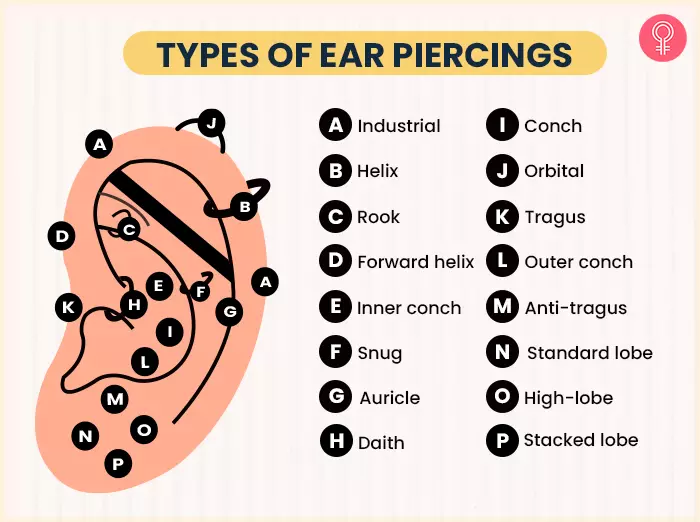
Here we have a detailed ear piercings chart that points out the various types of ear piercings. Keeping one of these handy can help you plan a vision board of what kind of piercings you would like to get. Any professional piercing studio you visit should have a chart of its own so that the staff can help you with pre-piercing precautions as well as aftercare instructions. Ensure having these discussions beforehand so that you can arrive at your appointment with a fully prepared mind.
Further, we shall explore each of these ear piercings in detail and learn about pain levels, the healing process, and styling ideas.
Different Types Of Ear Piercings
Each spot on the ear makes for a unique and intriguing placement for ear piercings. In this section, we will dive deeper into each ear-piercing placement and learn how painful each could be and how long it would take to heal.
1. Standard Lobe Piercing

As the name suggests, this is one of the most common piercings. It is done on the fleshy part of the lower lobe and is a suitable piercing placement that goes well with any fashion or occasion due to how common and accessible it is. It hurts the least, heals quickly, and can be adorned with a wide range of jewelry.
Pain Level: 1/10
Recovery Time: 1.5-2 months
Ideal Accessory: Versatile piercing that can handle all types of earrings from studs, hoops, threaders, danglers, chandeliers, Bajorans, barbells, and more.
2. Daith Piercing
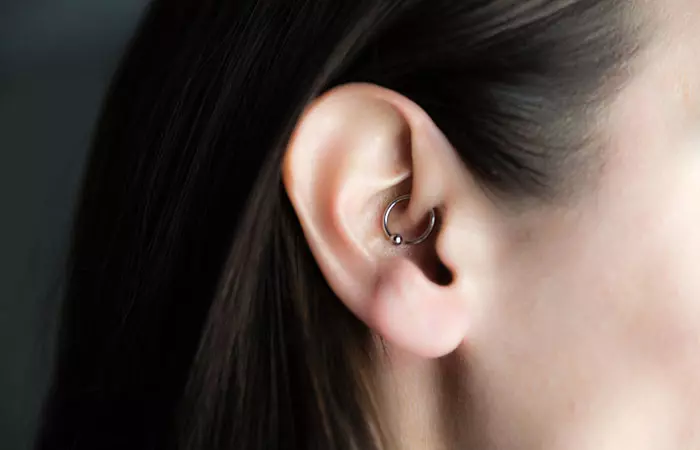
This unique piercing placement is done on the part where the upper cartilage folds into the ear canal. As it involves the cartilage, there is a certain degree of pain involved. However, since it is on the inside, one may feel just a dull ache while the piercing heals, and you may be able to sleep on it within a few months.
Pain Level: 4.5-5/10
Recovery Time: 5-9 months
Ideal Accessory: Curved pieces like barbells or hoops.
 Did You Know?
Did You Know?3. Helix Piercing

Helix piercings are done anywhere along the upper outer cartilage rim and are usually the next most popular piercings after the standard lobe. Although hoop and cuff earrings are most commonly worn here, a complementary or contrasting pairing with the standard lobe can make for an interesting look.
Pain Level: 4-4.5/10
Recovery Time: 6-12 months
Ideal Accessory: Hoops, cuffs, Banjoran, threader, studs, and barbells.
4. Forward Helix Piercing

The forward helix is the cartilaginous spot aligned with the daith and your side burn spot. This is a tricky piercing that must be done by someone very experienced as it is a tight spot with little protrusion and the daith fold behind it. A machine as well as a needle can be used to make it and it is sure to hurt more than the other piercings we have seen so far.
Pain Level: 5-6/10
Recovery Time: 4-9 months
Ideal Accessory: Studs, hoops, barbells, and curved barbells.
5. Auricle Piercing

The mid-helix or auricle is a spot on the outer cartilage rim right between the helix and the lobe. As the cartilage starts thinning from the top of the ear to the bottom, this spot has lesser cartilage and more flesh, ranking it comparatively low on the pain scale. This is the perfect spot for cluster studs that will spread uniformly on either side, covering the entire outer rim for a dazzling look.
Fattee, a beauty and lifestyle blogger has eight ear piercings in total; four on each side. They are lobe, helix, and auricle piercings. In one of her blog posts, she talks about her experience of getting those piercings done and rates their pain levels. “Out of a score of 10, I’d rate the pain level of the auricle piercing a solid 4, the rest of them that didn’t hurt much were a 1-2. All of my piercings were however pretty sore afterward, which is normal. Soreness for the lobe piercings lasted for about 2 weeks while the cartilage piercings were sore for up to 2 months (i),” she writes.
Pain Level: 3-4/10
Recovery Time: 4-9 months
Ideal Accessory: Hoops, studs, cuffs, and threaders.
6. Tragus Piercing
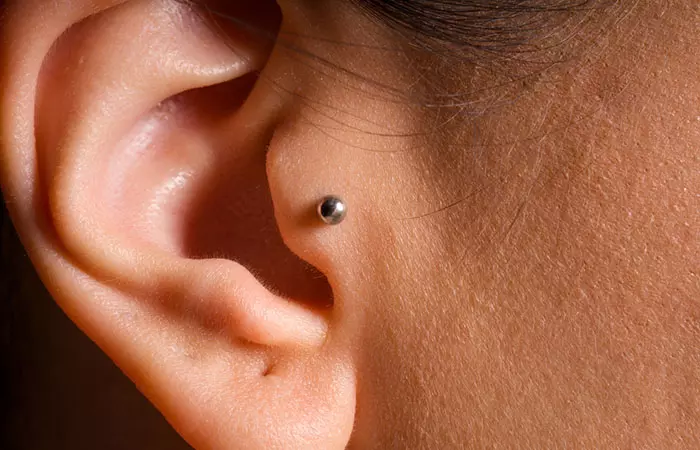
The tragus is the little, tongue-like protruding flap partially covering your ear canal. It has a thin layer of cartilage but not enough nerves to hurt too much. However, since it is right in front of the ear’s entrance, it makes using Q-tips and earphones/pods inconvenient and increases the recovery time and risk of infection. Some people do not have a prominent tragus and hence piercing professionals may refuse to do this piercing for them.
Pain Level: 4-5/10
Recovery Time: 6-10 months
Ideal Accessory: Hoops, studs, barbells, curved barbells, and threaders.
7. Anti-Tragus Piercing
View this post on Instagram
The anti-tragus is a protruding flap sitting on top of the earlobe, appearing diagonally opposite to the tragus, mirroring it. It is another part of the ear that may not be anatomically as prominent for all for a piercing. It has a thick cartilage layer, making it one of the most sensitive parts of the ears for a piercing, and can also take a very long time to heal despite good aftercare.
Pain Level: 6-7/10
Recovery Time: 9-12 months
Ideal Accessory: Studs, barbells, curved barbells, ball closure rings, and hoops.
8. Conch Piercing

The conch is the wide inner curve of the ear and is called so due to its resemblance to the shellfish that shares the same name. That entire cartilaginous curve can accommodate a versatile range of ear accessories for diverse stylizing. You can achieve a nest of studs or use a cuff to circle around the outer cartilage for an entrancing edgy look.
Pain Level: 6/10
Recovery Time: 4-10 months
Ideal Accessory: Studs, barbells, threaders, and cuffs.
9. Inner Conch Piercing
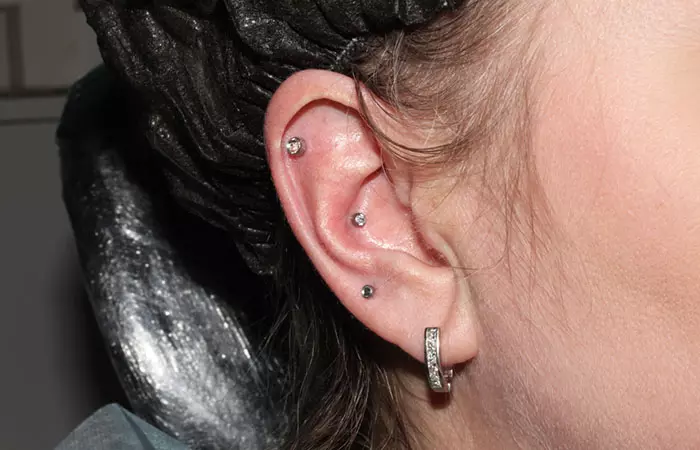
The inner conch refers to a specific spot where the conch starts curving outwards towards the auricle or mid-helix. The cartilage in this area is comparatively thicker as it turns and hence it hurts more than the conch piercings done in the middle parts of the conch shell. This is another spot that might make using earbuds and earphones difficult to use during the recovery period.
Pain Level: 6/10
Recovery Time: 4-10 months
Ideal Accessory: Studs, barbells, cuffs, hoops, and threaders.
10. Outer Conch Piercing

The outer conch piercing, also called the flat piercing, is a type of ear piercing that is done on the upper curve of the shell of the ear. This is the spot between the deeper conch and the upper helix rim and also comprises thick cartilage and nerves making it another part that may be super painful to get a piercing at. This piercing is also done at the curve where the inner conch curves outward, where there is a cartilaginous fold and that may be just as painful.
Pain Level: 6/10
Recovery Time: 4-10 months
Ideal Accessory: Studs, barbells, and threaders.
 Trivia
Trivia11. Industrial Piercing
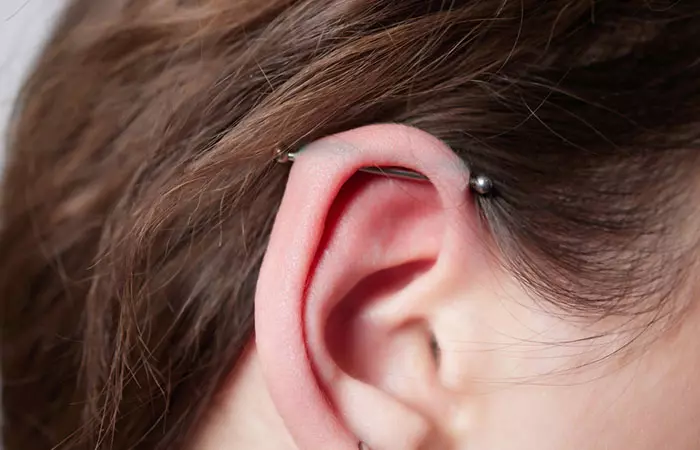
Rather than a location on the ear, industrial piercing refers to an accessorizing style that utilizes two cartilage piercings on the upper part of the ear to pass a long barbell accessory through. If you are getting both the piercings done at the same time, it may seem like it takes forever to heal as both are cartilage piercings that get irritated quickly and stay that way despite proper aftercare.
Pain Level: 6-7/10
Recovery Time: 9-12 months
Ideal Accessory: Barbells.
12. High-Lobe Piercing

The high-lobe placement refers to the upper parts of the lobe and is one of the least painful ear-piercing spots as the cartilage just begins to build up from there. While this spot is not as versatile as a standard lobe, various small-size earrings can be worn with this for fetching styling.
Pain Level: 1-2/10
Recovery Time: 1.5-2 months
Ideal Accessory: Studs, hoops, barbells, curved barbells, threaders, and cuffs.
13. Rook Piercing
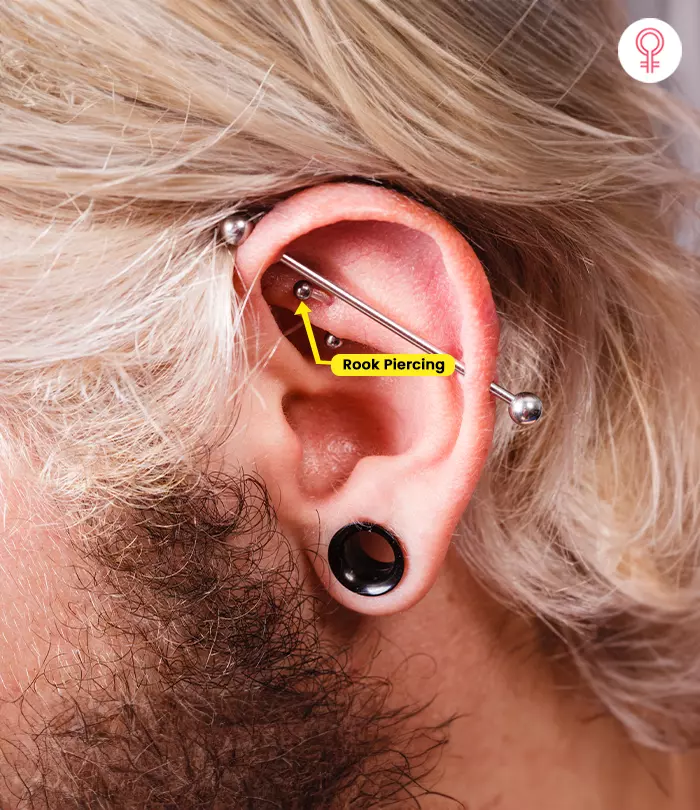
The rook piercing is a type of piercing that is done on an inner cartilage fold right behind the forward helix, above the daith, and below the outer conch. This is one of the rare piercing placements and is also high on the pain scale due to the folded cartilage. Once the piercing is healed, it allows for experimental accessorizing that makes loud style statements.
Pain Level: 6-7/10
Recovery Time: 4-10 months
Ideal Accessory: Barbell, curved barbell, hoops, and threaders.
14. Snug Piercing

The snug piercing, also called the anti-helix piercing, is done on the cartilage fold just above the anti-tragus. It is called a snug because of how it appears to be hugging the cartilage folds. As per anecdotal reports, the snug is generally accepted to be the most painful ear piercing placement. It also allows only a tight fit, therefore styling options are limited.
Pain Level: 9/10
Recovery Time: 4-7 months
Ideal Accessory: Barbells, curved barbells, and small hoops.
15. Orbital Piercing
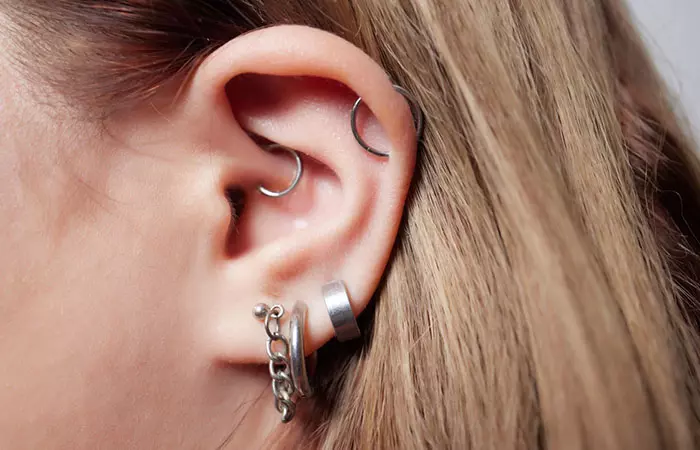
Orbitas is another piercing that refers to the styling rather than the positioning of the piercing. It involves using one ring accessory to pass through two piercings so that the ring appears to be orbiting around the skin. Different people have their interpretations of their positioning. However, going such a style on the helix, outer conch, and even lobe, is quite popular.
Pain Level: 2-5 depending on where you position it
Recovery Time: 2-3 months
Ideal Accessory: Rings.
16. Stacked Lobe Piercing
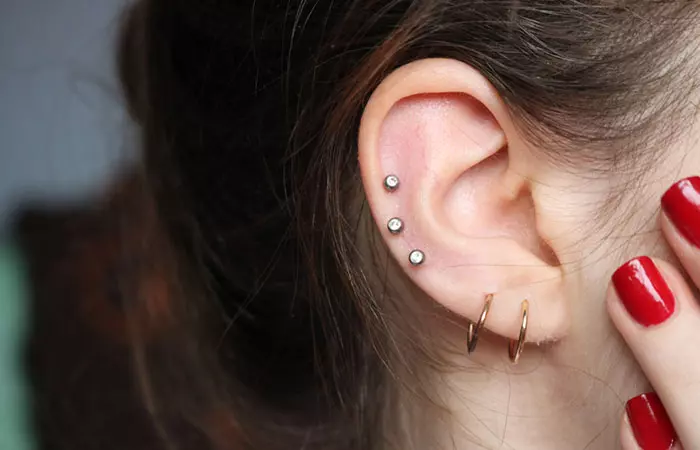
The last piercing in our list is also a styling tip rather than a piercing. It simply means that there are more than one piercings on the lower lobe area, clustered together to appear like a stack. If you have a flat and wide lobe, you may be able to experiment with different stud shapes for a cutesy or edgy look based on the accessory designs you choose.
Pain Level: 1-2/10
Recovery Time: 1.5-2 months
Ideal Accessory: Studs, hoops, rings, threaders, barbells, curved barbells, and more.
We bet each ear of the above-listed options appears more glamorous as you study them through images rather than an ear piercings chart. But which of these could be the ideal choice for you? Move on to the next section where we tackle this question and more.
What Ear Piercing Should I Get?
The most ideal ear piercing for an individual is subjective. However, you may consider the following pointers to arrive at a decision regarding which ear piercings would be most suitable for you.
- Pain Tolerance: Consider how much of a pain tolerance you have and also research on which piercings are considered to have high or low pain levels.
- Healing Time: Note the healing periods of each piercing and assess if it will be convenient for you depending on your schedules.
- Lifestyle: Think of how an ear piercing may impact a personal or professional life that involves using headphones often or requires formal hairstyles that may snag on upper cartilage piercings or the way you sleep at night.
- Social Environment: Consider how visible you want your ear piercing to be and how you want it to impact your social surroundings.
- Anatomy: Some piercings may just not be possible for you because of your ear’s anatomical shape. Don’t fuss over them for you can find clip-on options if you want to embrace them from a style perspective.
- Personal Symbolism: Consider if your piercings mean anything more than aesthetics to you. Attaching a personal symbolism may help in arriving at a choice faster.
- Professional Consultation: Ask a professional and experienced piercer about any queries you may have. Ask them for their ear piercings chart to see what they offer and ask what in their opinion would be most suitable for you.
Once you have settled on the perfect piercing options for yourself, consider the fact that all wounds and their healing processes come with certain risks. The next section elaborates further on this.
Common Risks And Side Effects Of Ear Piercings
Your fresh ear piercings require your diligent care and attention until fully healed. However, despite your best efforts, these piercings come with potential risks and side effects. Here are a few things you need to be careful about.
- Infections: Infections are the most common risks of wounds that aren’t properly tended to and may get infected by environmental bacteria and high blood supply in that area (2).
- Allergic Reactions: Some people may have an allergic reaction to the metals in the needle or earring used on fresh piercings. Discuss using hypoallergenic materials like surgical steel or titanium with your piercing expert (3).
- Bleeding: There may be mild cases of bleeding after the piercing. However, if there is excessive bleeding, reach out to the piercing or a medical expert immediately.
- Trauma: Clothes, hairstyles, or other everyday objects may snag at your piercings causing trauma or tears at the piercing site.
- Inflammation: Inflammatory conditions such as perichondritis, may affect a cartilage piercing and require medical intervention (4).
- Prolonged Healing Period: All the above conditions may slow down the healing process, further increasing the risk of infections or other problems.
Ear piercings are a prominent part of multiple cultures across the world. They can shape an individual’s identity and self-expression. They are so common that modern fashion has adopted them as a style statement that can contribute to one’s overall appearance and aesthetic. We have seen the ear piercing placement chart that depicts how different parts of the ear can accommodate different types of piercings and accessories and also learned about how painful or convenient they can be in day-to-day life. Lastly, we also looked through some tips to pick the most suitable ear piercings and what kind of risks to be aware of. We hope all our insights and tips will help you make an informed decision when you plan to get your next ear piercing.
Frequently Asked Questions
How many ear piercings can I have in a single session?
Ideally, it is best not to do more than 3-4 piercings per ear in a single session. Technically, you can get more done, but you also need to keep in mind that the more piercings you have, the more swollen and painful they will get while healing. This can get uncomfortable while sleeping or just going about your day.
When can I change my ear piercing?
If your ear piercing involves just the lobe, you can change your fresh ear piercing 6-8 weeks after getting it done. For cartilage piercings, you may need to wait for 12 weeks before changing them.
How should I clean an ear piercing?
Ensure cleaning your piercings 2-3 times a day with a saline solution that is usually provided by your piercer. You can also make a homemade lukewarm saline solution at home.
• Mix ½ teaspoon of sea salt in 1 cup of distilled water.
• Soak your piercing for 5-10 minutes to loosen the crusting.
• Gently dab with a clean gauze or cotton soaked in additional solution to remove residual crusting or discharge and rinse your piercing clean.
• Use a lint-free paper towel to pat it dry. Be careful not to scrub or tug at your piercing harshly throughout the process.
Key Takeaways
- Across different cultures in the world, ear piercings are said to have symbolisms related to social status, personal and political self-expression, as well as religion.
- There are 16 broad types of ear piercings of which the lobe piercings are the least painful as they only involve piercing the flesh. The others involve cartilage and nerves, making them more painful and requiring longer healing time.
- Throughout the healing period, ear piercings are vulnerable to bacterial infections. Hence it is important to ensure proper cleaning and care until it is fully healed.
Different types of ear piercings allow your personality to shine out in different ways. Check out this video where a professional stylist tells you about the 7 most popular ear piercings and how to style them.
Personal Experience: Source
StyleCraze's articles are interwoven with authentic personal narratives that provide depth and resonance to our content. Below are the sources of the personal accounts referenced in this article.
(i) My ear piercings // Why, what, where?
https://beauteewithfattee.wordpress.com/2018/05/07/my-ear-piercings-why-what-where/
References
Articles on StyleCraze are backed by verified information from peer-reviewed and academic research papers, reputed organizations, research institutions, and medical associations to ensure accuracy and relevance. Read our editorial policy to learn more.
- Daith Piercing in a Case of Chronic Migraine: A Possible Vagal Modulation
https://www.ncbi.nlm.nih.gov/pmc/articles/PMC5711775/ - Body Piercing Infections
https://www.ncbi.nlm.nih.gov/books/NBK537336/ - Jewelry For Initial Piercings
https://safepiercing.org/jewelry-for-initial-piercings/ - “High” ear piercing and the rising incidence of perichondritis of the pinna
https://www.ncbi.nlm.nih.gov/pmc/articles/PMC1120071/
Read full bio of Rodrigo Casco
Read full bio of Asmita De
Read full bio of Joyce Joyson





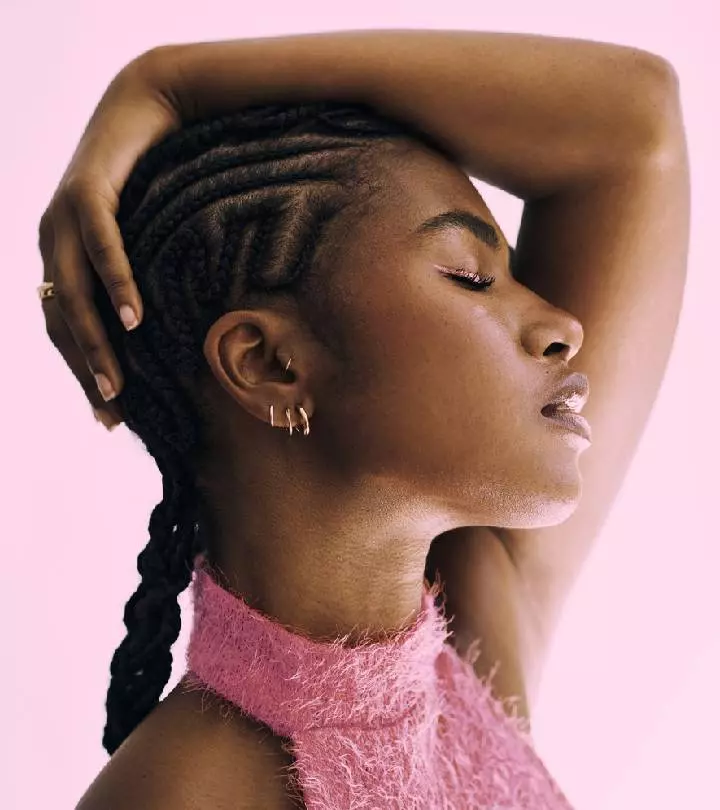
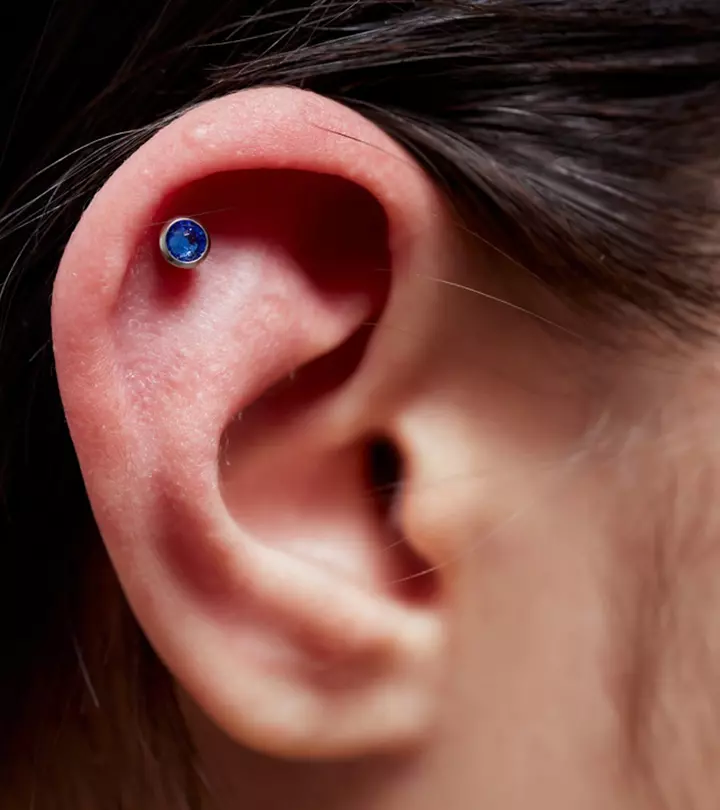

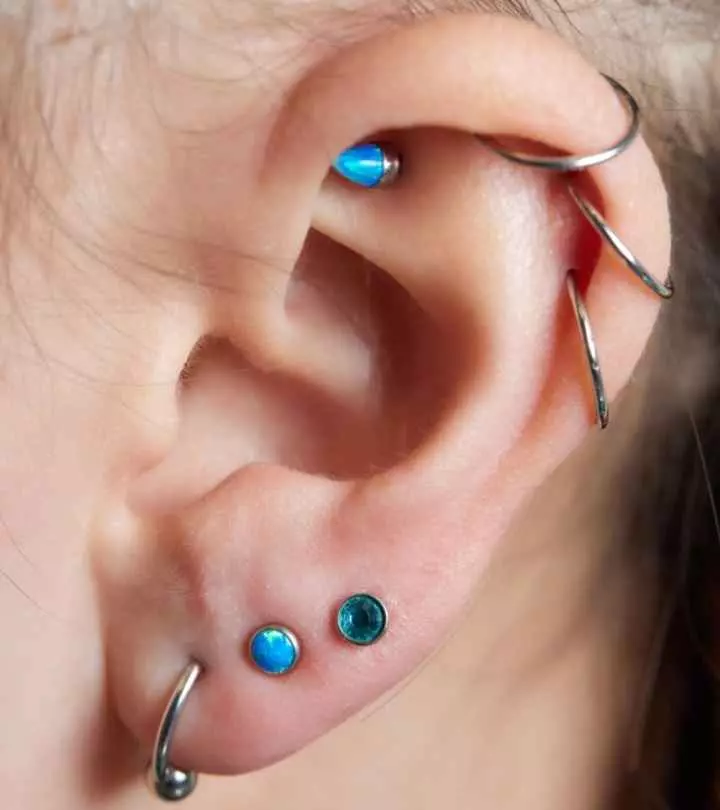
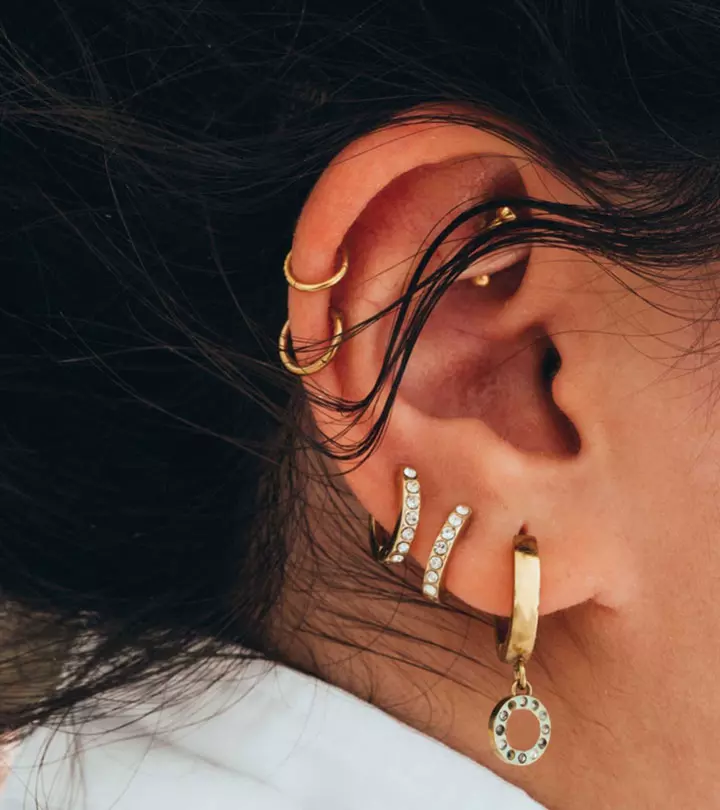




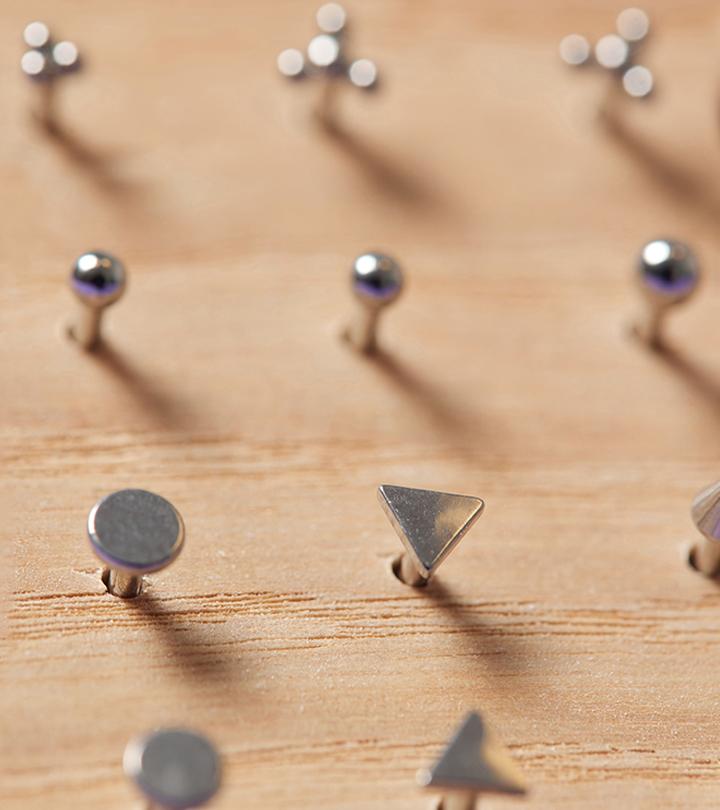
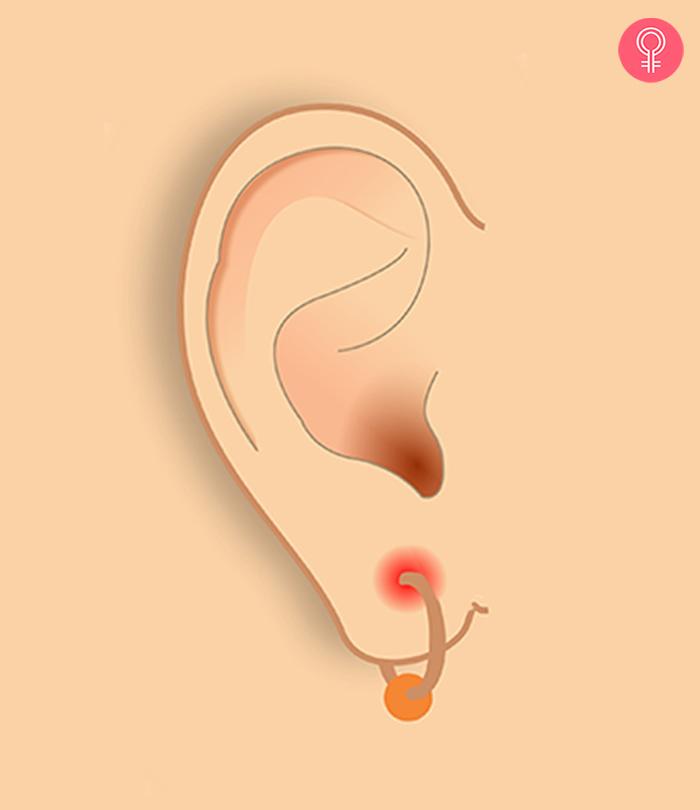

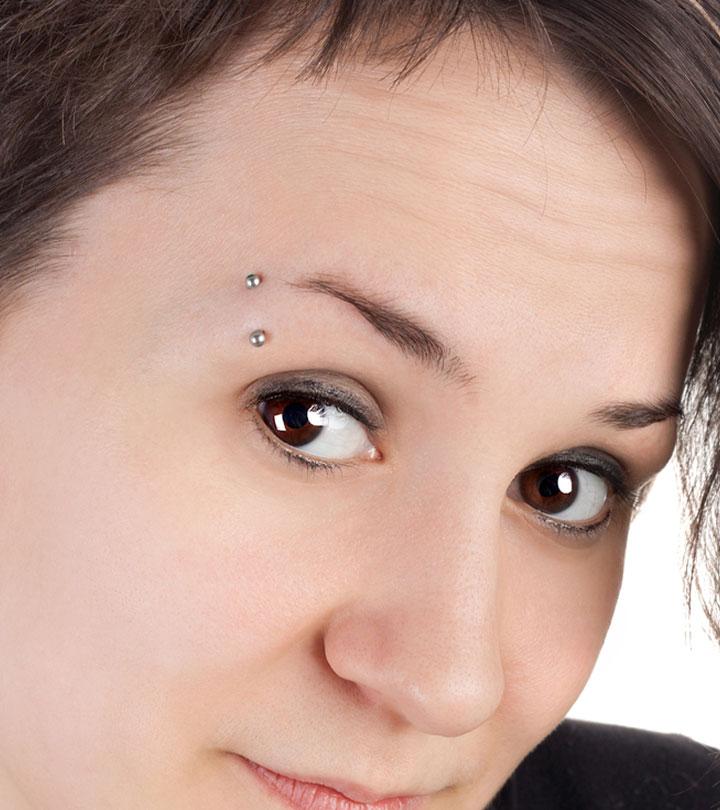
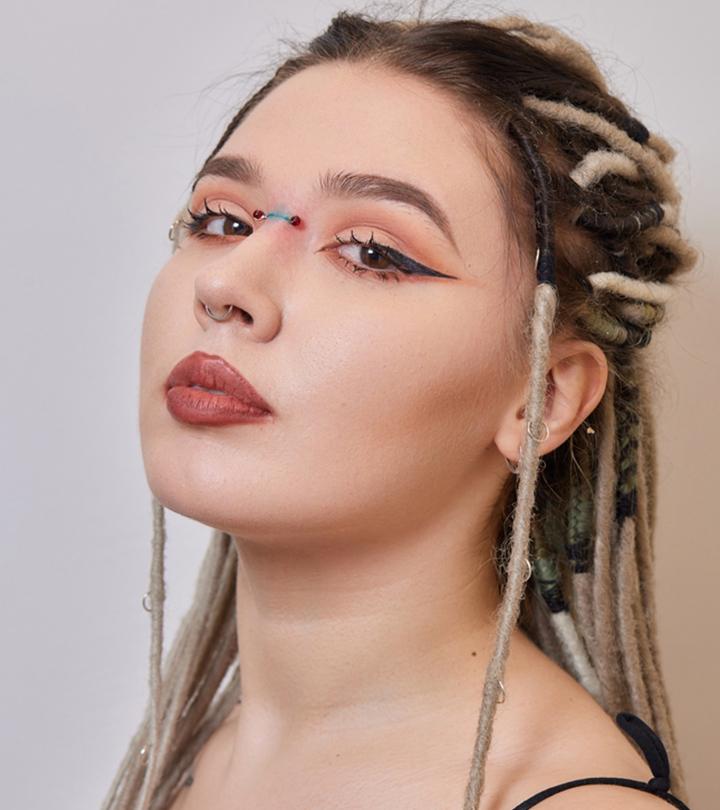
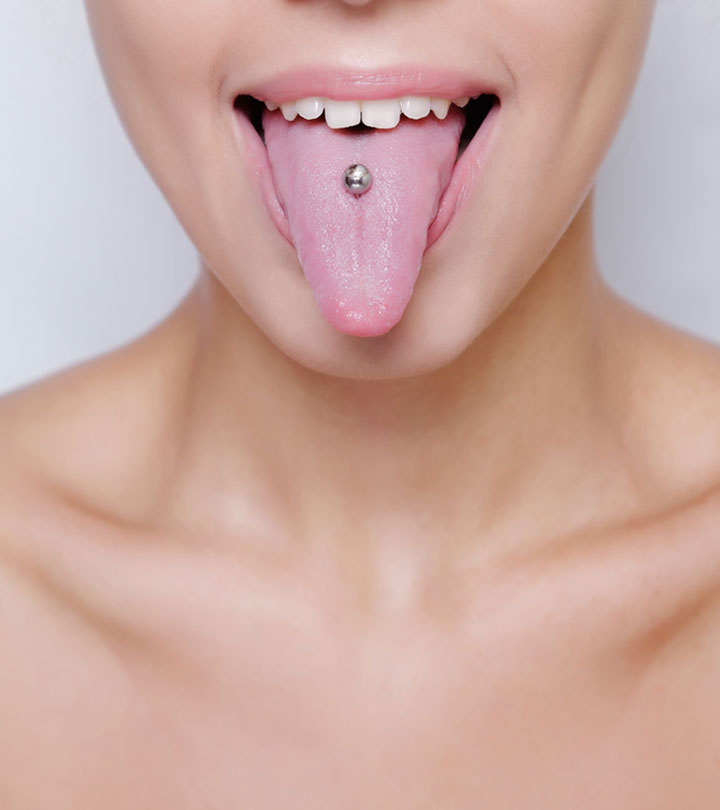
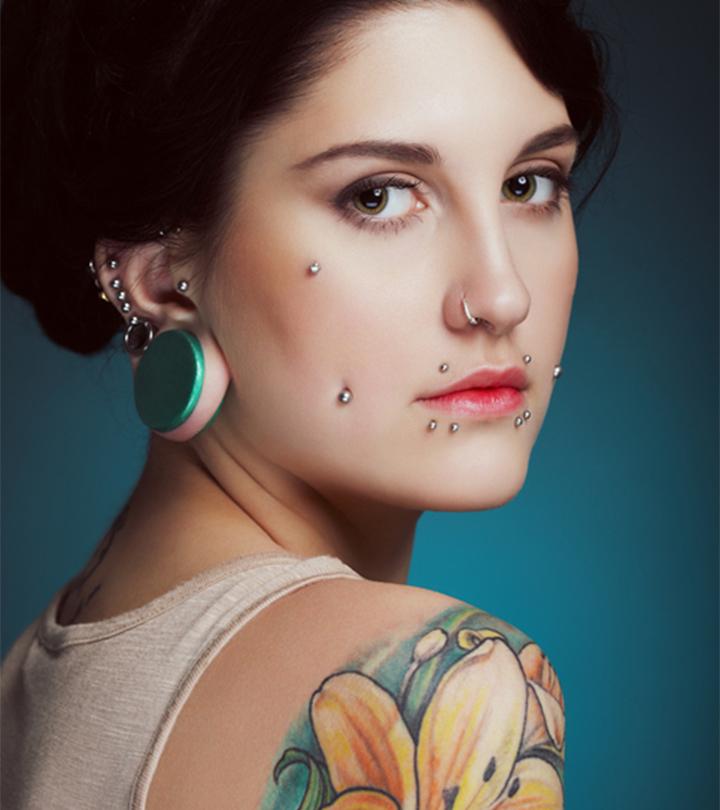
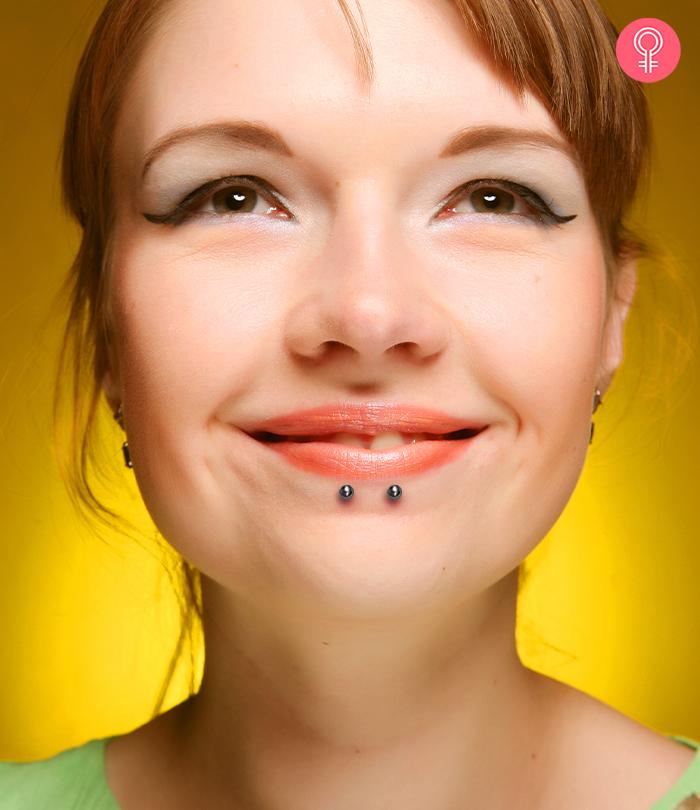
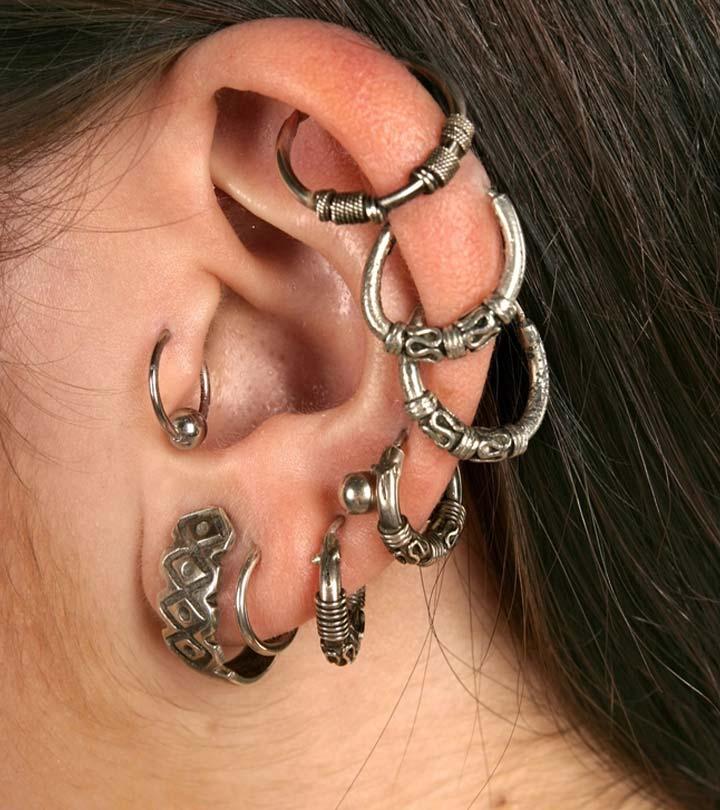
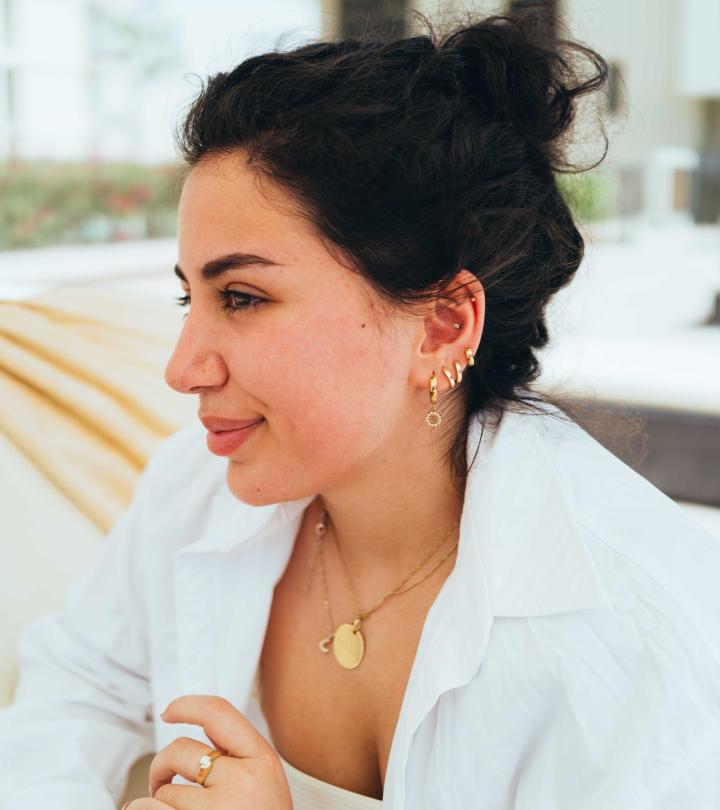


Community Experiences
Join the conversation and become a part of our empowering community! Share your stories, experiences, and insights to connect with other beauty, lifestyle, and health enthusiasts.